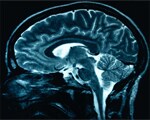Home-based exercise managed by a physical therapist is just as effective at restoring stroke patients' walking ability as a formal rehabilitation program using a specialised treadmill.

Home-based exercise managed by a physical therapist is just as effective at restoring stroke patients' walking ability as a formal rehabilitation program using a specialised treadmill.
Researchers randomly assigned 408 stroke patients with moderate or severe walking impairments to one of three study groups, two involving locomotor training [u1] and one involving home exercise. The patients were recruited from inpatient rehabilitation facilities in America and had an average age of 62 years. Slightly more than half were men, and all received 36 supervised, 90-minute sessions over a period of 12 to 16 weeks, in addition to usual care.
Those in locomotor training attended a formal rehabilitation programme where they used a treadmill while wearing a harness that offered partial body-weight support. Following treadmill training, they practiced walking. The early locomotor group started training two months post-stroke; the other locomotor participants began six months after their stroke. For the home-exercise group, a physical therapist focused on enhancing patients' flexibility, range of motion, strength and balance to improve walking ability, starting two months after the stroke.
The researchers were surprised to find that patients in the home exercise group did as well as those in locomotor training, which they thought would produce superior results. Indeed, at the end of one year, more than half (52 percent) of all study participants had improved their walking ability, with similar gains among all three groups. No differences were found among those who had started treadmill training two months or six months after their stroke.
They also noted that the progressive home exercise programme involved less expensive equipment, less training for physical therapists, fewer clinical staff members and better patient compliance. Collectively, the results suggest that home exercise is a more practical form of therapy with fewer risks.
Participants' improvement measurements were based on how well they could walk independently by the end of the study. Severely impaired patients were considered improved if they were able to walk around the inside of a house, while patients already mobile at home were considered improved if they progressed to walking independently in the community.
Not only did the physical therapy patients recover walking ability as well as the locomotor group, they were also less likely to drop out of treatment - 3 percent vs. 13 percent of the locomotor group. Minor adverse events, mostly falls, were reported by about 56 percent of participants, with no significant differences among groups. Patients who started locomotor therapy at two months and were severely impaired, however, were more likely to report multiple falls.
The study defies conventional wisdom that stroke recovery peaks at six months, demonstrating that patients who began rehabilitation even six months after their stroke continued to improve their walking for up to a year.
DoctorNDTV is the one stop site for all your health needs providing the most credible health information, health news and tips with expert advice on healthy living, diet plans, informative videos etc. You can get the most relevant and accurate info you need about health problems like diabetes, cancer, pregnancy, HIV and AIDS, weight loss and many other lifestyle diseases. We have a panel of over 350 experts who help us develop content by giving their valuable inputs and bringing to us the latest in the world of healthcare.












